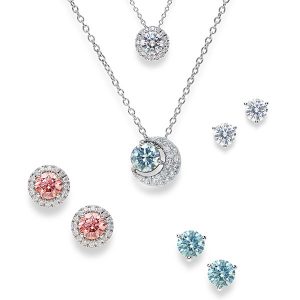
This week, an article appeared on Bloomberg saying that some producers are crying foul over De Beers’ Lightbox pricing:
The lab-grown industry has filed a complaint with the U.S. Federal Trade Commission (FTC), accusing De Beers of price dumping and predatory pricing.
“De Beers aren’t stupid,” said Chatham Chief Executive Officer Tom Chatham, who filed the complaint. “They know how to grow diamonds, but this equipment is not cheap. They are selling below cost.”
After this article appeared, Tom Chatham told me that he sent in a comment to the FTC, but he wouldn’t consider it a formal complaint. (No attorney was involved.) The International Grown Diamond Association says that it hasn’t filed a complaint and has no plans to.
Chatham says it is still early, given Lightbox hasn’t even launched yet. (The debut is set for this month, but no firm date has been announced.) But he still feels De Beers can’t make those numbers.
“As a grower of gem crystals for over 53 years, growing diamonds since 1993, I [am] very familiar with the costs,” he says. “I felt it was impossible for Lightbox to sell 1 ct. eye-clean, white stones at stated prices and that De Beers had a 100-year-plus history of buying markets and shoving competitors aside.”
First, it’s not clear that the FTC, or any government authority, will do anything about any kind of pricing issue. The big tech giants, including Amazon, Uber, and Google, have been accused of predatory pricing and not much seems to have occurred. (Amazon’s war against Diapers.com is notorious.)
Here is how the FTC looks at the issue:
Can prices ever be too low? The short answer is yes, but not very often. Generally, low prices benefit consumers. Consumers are harmed only if below-cost pricing allows a dominant competitor to knock its rivals out of the market and then raise prices to above-market levels for a substantial time. A firm’s independent decision to reduce prices to a level below its own costs does not necessarily injure competition, and, in fact, may simply reflect particularly vigorous competition…. Although the FTC examines claims of predatory pricing carefully, courts, including the Supreme Court, have been skeptical of such claims.
Still, this does raise the question: Is De Beers selling these items below cost?
De Beers executives have said they expect this venture to be profitable—though, as with most ventures, not immediately so.
Information about the cost of lab-grown diamond production is generally a secret. One source that has dealt with growers says most diamonds cost between $350 and $400 a carat to grow, though there are variables. Abe Sherman, CEO of Buyers Intelligence Group, and a bit of a lab-grown critic, says at one point he explored buying a reactor.
“We were about to get the cost down to $450 a carat,” he says. “And this technology was a generation or two behind [what De Beers has].”
De Beers has certain advantages over its rivals. It is not selling its diamonds with reports—and lab-grown reports can run about $50 to $100. (De Beers has its own lab, so it could conceivably save a bit on that.) It has also been researching this subject for years; it doesn’t necessarily need to recoup its R&D costs.
And, of course, not all diamonds are created equal. There is a lot of man-made product being manufactured right now, as demand rises. I hear that the better items are snatched up fast. But there is a lot of material out there on the lower end of the scale—and some of it comes with reports from labs considered lenient. Two weeks ago, I searched for 1 ct. G VS1 lab-growns online. I didn’t find that many.
Those that have seen Lightbox samples, like Sherman, came away impressed. But with samples, companies put their best foot forward. The proof will be what Lightbox offers day-in, day-out. De Beers has said it will produce a consistent quality of product, which is its reasoning behind not including reports. You wouldn’t grade an iPhone!
On the other hand, while diamond growing is a mechanized process, it has proven unpredictable in the past, the same way diamond mining can be. A lot depends on the individual technology and recipe involved, though sources tell me it can be cheaper and quicker to produce lower-quality product (which is often treated after). Without issuing reports, Lightbox may have a little leeway as to what it offers. So, as Chatham points out, it may not be possible to get a sense of Lightbox’s costs until we see the full range of what it’s offering.
De Beers’ pricing for its new line is certainly aggressive. Some have suggested it might be part of a greater Machiavellian scheme. But it’s unlikely to be seen as more than that.
(Images courtesy of Lightbox)
- Subscribe to the JCK News Daily
- Subscribe to the JCK Special Report
- Follow JCK on Instagram: @jckmagazine
- Follow JCK on X: @jckmagazine
- Follow JCK on Facebook: @jckmagazine